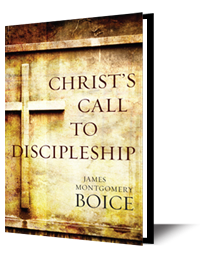Herod ruled for more than thirty years, most of the time from Tiberias on the southwest shore of Galilee, not far from Capernaum or Nazareth. But at this point he seems to have been at the fortress of Machaerus, about seven miles northeast of the Dead Sea, since that is where John was imprisoned.
When people read the gospels for the first time, especially if they do so superficially, as most do, the gospels seem to be mere collections of stories and teachings with little to connect them besides the obvious flow of events that marked the life of Jesus Christ, and even the order of events is sometimes puzzling. Yet there is far more to the arrangements of the gospel material than this, and the more we study the gospels the more intricate and profound the arrangements of the material seem to be.
That is what happens as we come to Matthew 14. The chapter begins with the death of John the Baptist, which does not seem to have much to do with the ongoing story of Jesus. And what is worse, John's death is not in the right sequence historically since the account indicates by means of a past tense in verse 3 (“had arrested”) that the death of John occurred not at this point but earlier. All that happens here is that Herod Antipas, the one who had John killed, hears about Jesus and thinks that Jesus is John somehow returned to life. The best handling of the facts would suggest that John was probably killed about a year before this in 29 A D.
Two things that will make hell terrible are suffering and memory of the blessings of one’s previous life. There is also a third thing that will make hell terrible. It is guilt over the role the wicked have played in bringing others to their end. More than one hundred years ago, as part of the last great religious awakening to sweep Britain, a man named Brownlow North preached a classic series of revival sermons on the rich man and Lazarus, in one of which he makes that last point well.
As we pointed out yesterday, there are three important facts about Jesus’ picture of the final judgement: First, it is absolute. The second point of Jesus’ parable is the terrible fate of the unrighteous. I am glad Jesus taught that, and that it is not left for his ministers to imagine what the unbelievers’ fate might be. How could we say that their end will be so bad that it can only be adequately compared to an eternal burning? How could we say that it will produce an eternal “weeping and gnashing of teeth”? No mere human being would dare predict that fate for another human being. Yet that is what Jesus does. He has more to say about hell than does any other person in the Bible.
There are three important facts about Jesus’ picture of the final judgment as a separation of good from bad fish. First, it is absolute. That is, in the day of God’s judgment the time for mixture in any form will be over. Now we have mixture all the time. We do some good things, but our good is always mixed with evil. We have the redeemed people in the church, but we also have those who are the devil’s children. However, when the Lord sends his angels to execute judgment those days will be over, and human beings will find themselves in one camp or the other. Either they will be with the blessed in heaven, having been cleansed from all sin by the redeeming work of Christ, or they will be in hell without Christ and without hope. No one will be partially in one camp and partially in the other.


















